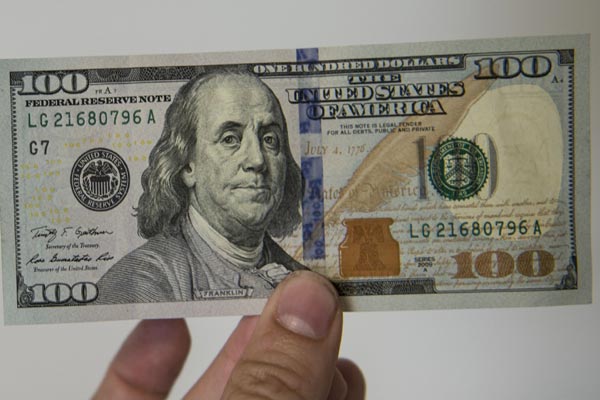Friday, 13 November 2015 03:17
 NEW YORK: The US dollar dropped for a second day on Thursday as investors booked profits from its precipitous rise in November, sending other major currencies higher.
NEW YORK: The US dollar dropped for a second day on Thursday as investors booked profits from its precipitous rise in November, sending other major currencies higher.
The dollar fell against the euro, yen and Swiss franc, but analysts remained bullish on the longer-term view of the greenback.
“It’s just a bit of profit-taking,” said Juan Perez, foreign currency trader at Tempus Consulting. “The one thing that’s inevitable is for the dollar to rise.”
The U.S. dollar has risen nearly 3.0 percent against the euro so far in November after a stronger-than-expected U.S. jobs report Oct. 28 bolstered the case for a Federal Reserve interest-rate hike in December. That has pushed traders to back short-term trades on the euro.
Latest data from the Commodity Futures Trading Commission showed short euro positions among speculators in futures markets were at their highest since June.
The dollar fell 0.34 percent against the euro to $ 1.0778 per euro and was down 0.25 percent against the Swiss franc at 1.0018 francs.
The dollar index also fell 0.3 percent to 98.706. The dollar slipped 0.14 percent against the yen to 122.65 yen.
Perez pointed to political instability in Portugal, Greece and Spain as well as comments from European Central Bank President Mario Draghi that suggested the bank was open to more easing in the euro zone next month as indicators that Thursday’s dollar losses were likely short-lived.
German 10-year yields fell 1 basis point to 0.60 percent , having opened the day higher. All other euro zone yields were down on the day.
In contrast to Europe’s troubles, more in-line data on the U.S. economy Thursday reinforced expectations for higher U.S. interest rates that raise demand for the dollar.
U.S. jobless claims held steady last week and job openings, an economic indicator said to be on Fed Chair Janet Yellen’s radar, increased in September.
“The likelihood of quantitative easing being added on in the euro zone on Dec. 3 and of the Federal Reserve hiking rates (later in December) are very, very high,” Perez said.
Further illustrating the divergence between the U.S. and euro zone’s respective positions, the gap between U.S. and German five-year yields rose to 181 basis points, the highest since 1999.
The biggest mover against the U.S. dollar was the Australian dollar, which was buoyed by a surprising jobs report that showed the country’s economy created 58,600 jobs last month and knocked 0.3 percentage points off its unemployment rate.
The Aussie at one point was 1.1 percent higher versus the dollar in overnight trading. It was last up 0.8 percent at $ 0.7118.




























